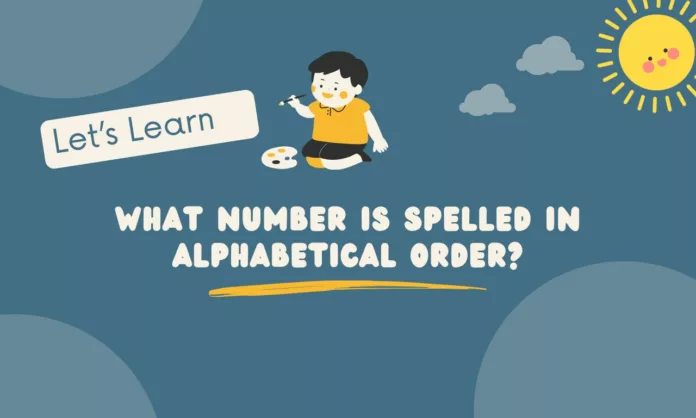Have you ever wondered what number would be spelled in alphabetical order? It’s an intriguing question that may spark curiosity and lead to some interesting insights. While numbers are primarily represented by digits, we can explore their alphabetical counterparts by converting them into words.
So, let’s delve into the world of numbers and alphabets to find out what number stands first in the alphabetical order.
To begin our exploration, let’s take a look at the English language and how numbers are typically spelled. From zero to nine, each number has its own unique word representation: zero, one, two, three, four, five, six, seven, eight, and nine. However, once we move into the double digits, a pattern emerges.
Starting from ten and continuing through the teens, the number words are formed by combining the root word with a suffix. For example, ten, eleven, twelve, thirteen, and so on. The suffix “-teen” indicates that these numbers are in the range of 10 to 19. Moving forward, we encounter the multiples of ten, such as twenty, thirty, forty, and so forth. The pattern continues with the addition of the digits from one to nine to form numbers like twenty-one, thirty-two, forty-five, and so on.
Now that we have a basic understanding of how numbers are spelled in English, we can begin our quest for the number that comes first in alphabetical order. To determine this, we need to consider the alphabetical order of the initial letter(s) of each number word.
Let’s examine the first letters of the number words we’ve discussed so far: z, o, t, f, f, f, s, s, e, and n. Arranging these letters in alphabetical order, we get e, f, f, f, n, o, s, s, t, and z. As we can see, “e” comes first, indicating that the number “eight” would be the first number in alphabetical order.
So, according to our analysis, “eight” is the number that stands first when we arrange the number of words in alphabetical order. It’s worth noting that this conclusion is specific to the English language and its number naming conventions. Other languages may have different number words and alphabetical orders, so the outcome could vary.
While the concept of arranging numbers in alphabetical order may seem unusual, it offers a fascinating perspective on the relationships between numbers, words, and language. Exploring such puzzles can be an enjoyable way to engage with the intricacies of language and expand our understanding of how we represent numerical concepts.
In conclusion, the number “eight” takes the lead in alphabetical order when we spell out numbers in English. This exercise sheds light on the intriguing connections between numbers and language, reminding us that there is always something new to discover, even in the seemingly familiar realm of numbers.

